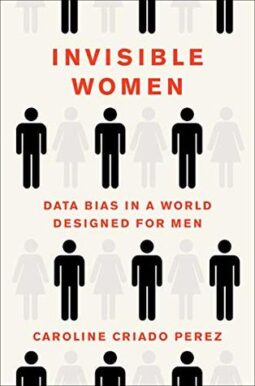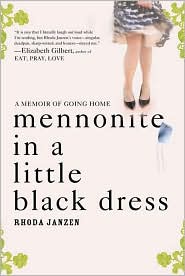This review contains affiliate links, which earn me a small commission when you click and purchase, at no extra cost to you. Thank you for supporting my small business and allowing me to continue providing you a reliable resource for clean book ratings.
For millennia, men have been the “default” or “standard” humans, women the “atypical” humans, writes Caroline Criado Perez, citing the opinions of Aristotle and numerous other men over the years. The “male-unless-otherwise-indicated” approach is baked into our language; it’s evident in many data sets and algorithms that we all assume are neutral. We simply are not gathering data from women and tagging it as such, and that impacts women’s lives in ways small and large, from merely annoying up to deadly. And the impact on women’s lives impacts all of society, so this data gap is one that should concern everyone, male and female, from scientists to governments, from academia to corporations.
In Invisible Women, Criado Perez walks readers through a number of situations where bias affects women’s lives: “daily life, the workplace, design, going to the doctor, public life (and) when it goes wrong.” For instance, municipal governments’ decisions about mundanities such as where snow should be cleared first have surprising impacts on how women go about their daily lives. Because women are responsible for the bulk of (75%) unpaid labor in society, including child and elder care and household duties — a pertinent fact that is raised again and again in this book — their patterns of traversing cities or towns are vastly different than those of men. So when cities clear snow off main roadways first because those are where (mostly male) commuters drive (possibly their households’ only cars) around 8 or 9 a.m. and 5 and 6 p.m., they overlook where women walk or push strollers as their main source of transportation or in between public transportation stops, making it more difficult for them to get to schools to drop off children, shop at stores, or do part-time work.
Typical workplaces and working hours are geared far more toward the needs and qualities of men, in so many ways. Temperatures are set for the average man. Uniforms are too often made for men, and only sized down for women, not adjusting even for simple differences like the presence of breasts. This matters most when it’s female police officers or firefighters who have to wear boots that are made for men or protective vests made for men: It can mean the difference between life and death or serious injury.
The gender data bias comes into play even when outsiders (primarily men) come in to help areas that have been hit by natural disasters or to provide simple solutions to improve living conditions in very poor areas around the globe. Criado Perez gives several examples of the negative results of failing to consult women in such relief efforts, such as when emergency housing didn’t account for space for cooking or preparing food.
So-called “gender neutral” products often forget 51% of the world’s population. “When Apple launched its ‘comprehensive’ health-monitoring system with much fanfare in 2014,” it forgot a period tracker. In fact, tech is terrible at designing for women: VR headsets or “haptic jackets” don’t fit; treadmill calorie counters are only accurate for the average male. Fitness monitors vastly underestimate steps done during housework or don’t account for the movement of pushing a stroller, the book says. Even putting tracking apps on phones doesn’t account well for how women move around in the world, because if phones are designed to fit in pockets, women’s clothes either often don’t have pockets or have small pockets that won’t hold a phone.
Health care falls dreadfully short in meeting women’s needs. Doctors far too often tell women their symptoms are in their heads. Most studies testing new medications are done with exclusively or mostly male subjects. Medicines can have very different effects and efficacies in women than in men, just as diseases often present with different symptoms. So if a study with all men rules out a drug for inefficacy, it’s entirely possible we may never know if that drug would have worked well for women. Case in point: Viagra, which was tested originally for treating heart disease. It didn’t help much with men’s heart disease, but we know what it did affect. Decades later, it has yet to be tested on women. On top of these problems affecting all women, we know very little about “how to treat pregnant women for pretty much anything” because studies avoid them like the plague. (Just this past week, for example, the World Health Organization recommended pregnant women not get the Covid vaccine, because studies didn’t include pregnant women, so there’s no way to know safety or other effects.)
Before studies get to human testing stages, they almost always feature male animals, too, so not even the earliest research looks at differences between males and females. And sex-dependent effects could be crucial. One study showed that having a heart attack during the daytime as opposed to at night correlates with better survival. However, another study showed the opposite, a mysterious contradiction which only was solved when it was discovered that one study looked at male mice and the other used female mice. “Different sex: totally opposite result.”
I could go on and on sharing examples, but the point is that you should read the whole book to get all of them. Invisible Women is meticulously researched and data-driven, even while providing the relatable, readable stories behind these data: stories of women in many places and different circumstances, but all sharing some of the most simple of concerns: wanting to survive and thrive, give birth to and raise children, make sure aging parents have what they need, and simply contribute in the public sphere. Because when women are truly represented in government of all levels, in business/workplaces, in science and medicine, they will be able to help create solutions that only they can provide. And those solutions will help all of society.
This is one of those books that absolutely makes sense and from which I want to share details and anecdotes with people around me. But easiest is for you to read it and then we can talk about it together. Even better, share with a friend.
Rated: Moderate, for one instance of strong language and a few instances of moderate profanity. There are occasional references to domestic violence and rape.
Click here to purchase your copy of Invisible Women on Amazon.




